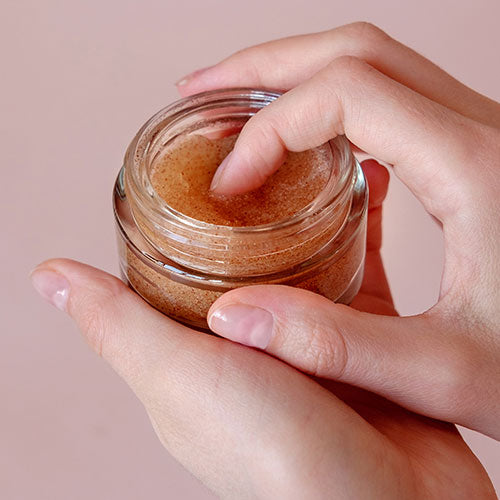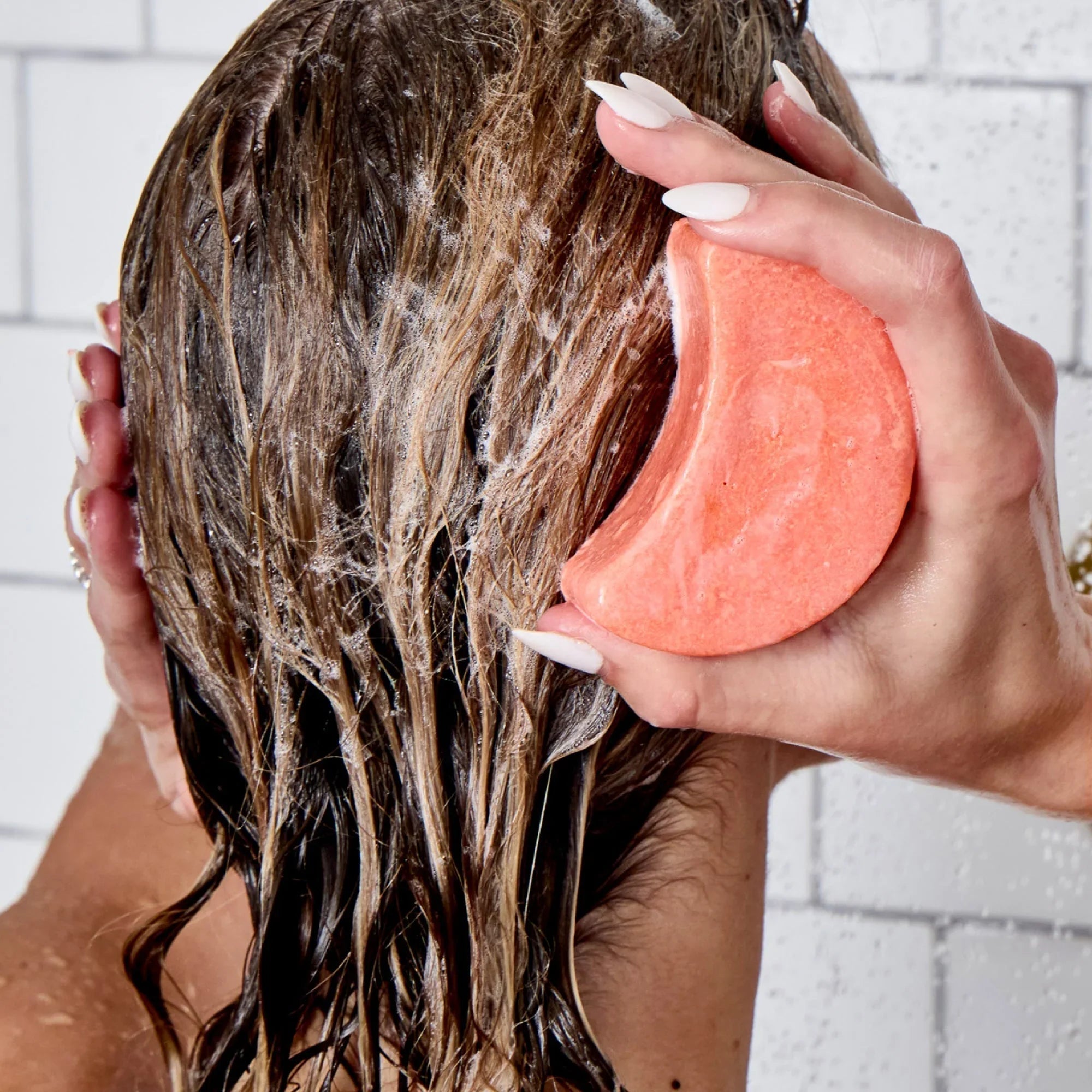
The science of sunscreen.
Coral reefs - those totally beautiful, and incredibly important living structures - are under increasing threat around the world, and (surprise, surprise) that’s mostly because of climate change. Warmer waters and ocean acidification (caused by more dissolved carbon dioxide in there) are the main culprits, but there’s another, more unexpected threat, too - sunscreen worn by swimmers and snorkelers.
Sunscreen, we’re finding out, can also be contributing to the loss of coral reefs by causing and exacerbating coral bleaching.

What is coral bleaching?
Coral looks like plants, but are actually a colony of marine invertebrates (animals) called polyps. Inside their tissues are zooxanthellae, which are microscopic algae. This algae-coral relationship is a beautiful example of symbiosis, where each organism benefits from the other. The algae photosynthesise, producing nutrients and energy for the coral. In exchange, the coral gives the algae a safe place to live.
The algae provide about 90% of coral energy and as such coral cannot live long-term without them.
High temperatures or chemical compounds kill the algae, or force them to abandon their coral hosts, taking their ability to photosynthesise and most of the colour with them. While bleached coral isn’t dead and can recover, its life hangs in the balance unless the algae returns quickly. Bleaching events can be huge - one previously covered over half of the Great Barrier Reef.
Why sunscreen is an issue
Chemical sunscreens, containing ingredients like oxybenzone, octinoxate and avobenzone, work by changing UV rays into heat, which is then released from the skin. Physical sunscreens, like zinc, offer a barrier to scatter UV rays, and are thought to be safer and more natural.
Here’s what we know:
- Uncoated zinc oxide (ZnO) was shown to rapidly cause severe bleaching by disrupting the zooxanthellae. ZnO also has negative effects on surrounding marine organisms, not just corals.
- Modified titanium dioxides seem to have little to no effect on corals when tested at the same concentration as ZnO.
- Octinoxate and octocrylene have a strong potential to bioaccumulate and have been found in the body tissues of dolphins, as well as corals.
- Oxybenzone has been shown to cause bleaching across multiple species, particularly in the presence of light.
- Ethylhexyl methoxycinnamate and benzophenone-3 (more chemical UV filters) have been found in high concentrations in fish in rivers and coastal areas of Spain and Portugal.
- Unfortunately, the science behind this isn’t yet mature and there is still much to be done. But the limited results thus far demonstrate that relying on zinc is far from a smart strategy.
- Other ingredients, such as parabens (a common preservative) have also been shown to have a bleaching effect.
It is worth noting that these studies used higher concentrations than what you might expect in the real world. But these concentrations are theoretically possible in areas with high tourist numbers and gentler currents (where people love to swim and snorkel). Studies have found that in popular coastal areas, concentrations of these UV filters can be 2-10 times higher in summer than winter. The most worrying part is around bioaccumulation in fish - this may cause unforeseen knock-on effects, and a lot of work still needs to be done.
Should we just use zinc?
Unfortunately, the science around this isn’t yet mature, but the limited results tell us that zinc is far from a smart strategy.
Uncoated zinc oxide (most zinc used in natural based sunscreens) causes rapid and severe bleaching.
So while zinc sunscreens are often better tolerated by those with sensitive skin, allergies or conditions like rosacea and eczema, they’re no more reef-safe than any others. In fact, in some circumstances, zinc-based sunscreens can prove to be even worse as the bleaching was so severe and the concentrations of zinc in sunscreen needs to be significantly higher than a chemical sunscreen.
When banning goes bad
UV filtering chemicals that cause coral bleaching are starting to be banned all over the world. Palau banned chemical sunscreens in 2018, followed closely by Hawaii and the Virgin Islands. It’s a safe bet that more countries will follow suit. Oxybenzone and octinoxate are among those ingredients most commonly banned. As with many decisions, these bans have been enacted quickly without any real science behind them.
Banning just a few of the sunscreen ingredients proven to exacerbate bleaching will force more consumers to choose zinc-based products as they are pitched as being reef-safe.
So, what should we do instead?
I’m taking a guess here that your sunscreen isn’t reef safe, even if you’ve shelled out for expensive, zinc oxide-based ‘reef safe’ sunblock.
It’s a tough one, because the science proving the UV rays are damaging is of course beyond reproach, so we need to be able to protect ourselves.
Here’s how to protect yourself without sacrificing the ocean.
- Snorkelling or swimming? Minimise your need for sunscreen with a long-sleeved bodysuit or t-shirt.
- If you are SCUBA diving, try and skip the sunscreen entirely. I don’t wear any before a dive, instead I cover up and wear a hat. When I have finished diving for the day and want to spend time in the sun, then I apply sunscreen as I won’t get back in the water.
- Use a titanium dioxide-based sunscreen. For anywhere you can’t cover, like your face and hands, opt for a sunscreen that’s based on titanium dioxide, with strong water resistance to prevent rinse-off as much as possible.
- Don’t rub your skin. When you’re swimming, avoid touching your skin to minimise the amount of sunscreen that comes off.
- Avoid popular areas. With these compounds, concentration matters. If you’re swimming where others are, you’re adding to the problem in an already challenged area.
- Check your sunblock ingredients. Even if the label says ‘reef safe’, read the ingredients. If they include zinc, don’t buy it.
But does it really matter?
In the scheme of things, sunscreen isn’t in the top ten threats to our oceans and reefs - rising temperatures and acidification are by far more worrying.
But thinking carefully about our sunscreen is an easy change we can all make - and, out of principle, we should be calling companies out when they’re making claims that aren’t true.
The best thing you can do for the oceans is to minimise your fish and meat consumption (because meat production is a huge cause of climate change), stop supporting destructive industries like fast fashion, and encourage moves by NGOs and governments to protect larger areas of our oceans.
Switching to plastic free beauty products such as shampoo bars, conditioner bars and body wash bars will also help reduce the amount of plastic and waste in our oceans.
Buying a more responsible, titanium-based sunscreen? That won’t hurt, either.
Read on an additional 10 ways to protect our oceans.
Sources:
Raffa RB, Pergolizzi JV Jr., Taylor R Jr., Kitzen JM; for the NEMA Research Group. Sunscreen bans: Coral reefs and skin cancer. J Clin Pharm Ther. 2019;44:134‐139 doi.org/10.1111/jcpt.12778
Gago-Ferrero P, Díaz-Cruz S, Barceló D. Science of The Total Environment 518-519 (2015) 518-525: UV filters bioaccumulation in fish from Iberian river basins. dx.doi.org/10.1016/j.scitotenv.2015.03.026
M. Sendra a,⁎, D Sánchez-Quiles b, J. Blasco a, I. Moreno-Garrido a, L.M. Lubiána, S. Pérez-García a, A. Tovar-Sánchez a,b. Environmental International 98 (2017) 62-68: Effects of TiO2 nanoparticles and sunscreens on coastal marine microalgae: Ultraviolet radiation is key variable for toxicity assessment. http://dx.doi.org/10.1016/j.envint.2016.09.024
Danovaro R, Bongiorni L, Corinaldesi C, Giovannelli D, Damiani E, Astolfi P, Greci L and Pusceddu A. Environmental Health PerspectivesVol. 116, No. 4: Sunscreens Cause Coral Bleaching by Promoting Viral Infections. https://ehp.niehs.nih.gov/doi/10.1289/ehp.10966
Fel, JP., Lacherez, C., Bensetra, A. et al. Coral Reefs (2019) 38: 109. https://doi.org/10.1007/s00338-018-01759-4
Corinaldesi C, Marcellini F, Nepote E, Damiani E and Danovaro R. Science of The Total Environment 637-638 (2018) 1279-1285. Impact of inorganic UV filters contained in sunscreen products on tropical stony corals (Acropora spp.). https://doi.org/10.1016/j.scitotenv.2018.05.108



